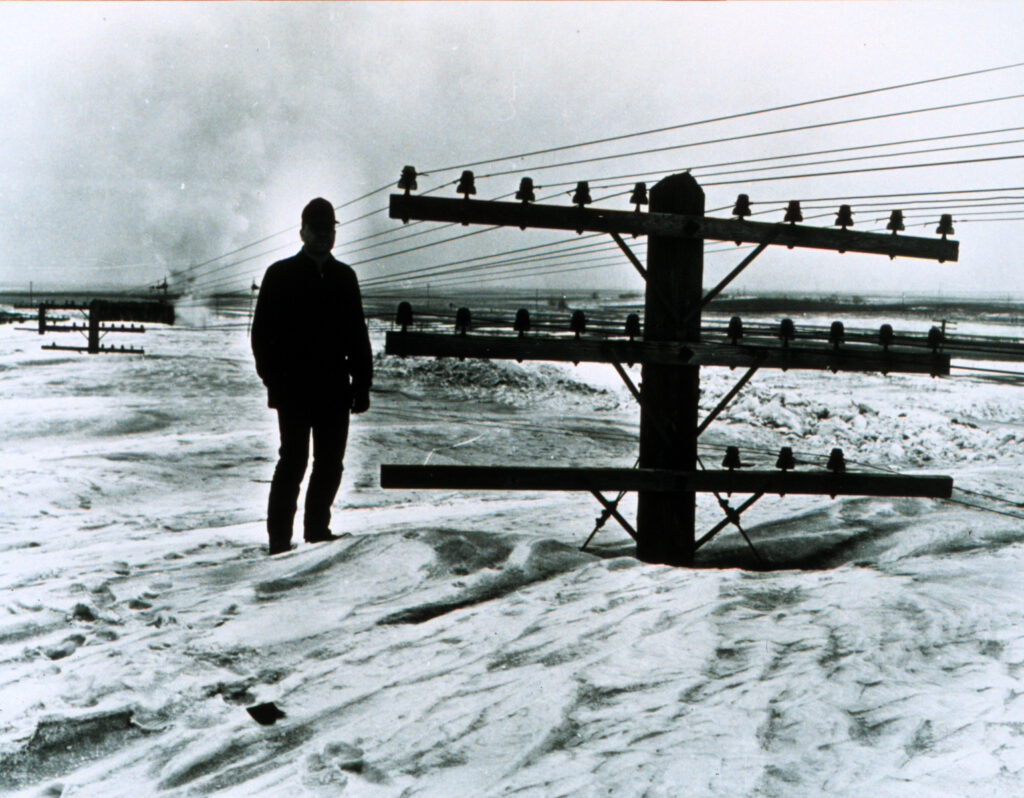

March 2nd 1966 was the start of something we may never see again.
Snow began over the southern half of the state Wednesday morning, March 2, and spread northward by Thursday to all of North Dakota except the extreme northwest and north central portions. By Friday all parts of the state were under the influence of a severe blizzard except the three extreme northwestern counties which experienced high winds and dust storms but no snowfall.
In some respects, the blizzard of 1966 can be considered one of the most severe in the history of the state. The legendary January 12, 1888 blizzard, which left at least 112 persons dead, lasted for 14 hours. The unusually severe blizzard of March 15, 1941, with 70 mph winds, crossed the state from northwest to southeast in only 7 hours, leaving 39 dead in eastern North Dakota, where the storm was most severe.
In the 1966 storm, winds reported over 70 mph continued unabated for up to four days in some areas. Snowfall, reported as much as 38 inches in the northeastern part of the state, was piled into mountainous drifts 30 to 40 feet high in many places over the state. For the first time in the history of many towns, schools were closed, all business was suspended, newspapers failed to publish, and all forms of traffic came to a complete halt.
The loss in livestock was serious, with an estimated loss of 18500 cattle, 7500 sheep, and 600 hogs. On a farm in eastern North Dakota, 7000 turkeys perished. Many cattle suffocated in barns which became completely sealed in by huge snowdrifts. Pole barns, in which stock were herded before the storm struck collapsed, resulting in many dead and injured animals. The total loss of livestock was estimated at near 4 million dollars.
Power and telephone service were interrupted for up to several days in many areas, by the high winds and driven snow. Heavy drifts crushed sheds and aircraft hangers and many store windows were blown in. Snow was driven into attics and chimney vents were frozen, resulting in a number of cases of gas poisoning. Many all-time records for monthly snowfall, for snowfall during one storm and for 24-hour snowfall were broken. The length of the duration of the blizzard, particularly in the southern half of the state, set many records as did the length of zero and near-zero visibility conditions. The snow, which carried large quantities of dirt, was dubbed “snirt”.
This 1966 blizzard can therefore be considered as an all-time record blizzard for North Dakota for sustained severity, low visibilities, and amount of snowfall.
On the Minnesota side:
Snowfalls of over 2 feet and high winds paralyzed most of the region for up to 4 days. Although temperatures did not drop sharply, duration marks this as one of worst blizzards on record. Heart attacks while shoveling snow caused deaths at Moorhead and Park Rapids. At Warroad a man fell dead while wading through deep drifts. A woman froze to death near Bear River after leaving her stranded car. Unlike the Dakotas, Minnesota experienced little stock losses, apparently because state has large forest regions and this holds down the drifting problem. Mink ranches near Warroad had losses due to heavy snow. At Hallock farmers were forced to dump milk. Many radio and TV towers took severe damage from winds. Highway patrols set up road blocks much of region allowing only emergency trips with snowplows. Snowmobiles became usual means of transportation. At Crookston, police borrowed 10 snowmobiles and used them in place of squad cars for emergency runs. There were many reports of snow causing roofs to cave in. In Duluth, the blizzard combined with an ice storm. Heavily iced (up to 3 inches) power lines down throughout the city were tossed around the streets by high winds. Other smaller towns in the area were also without power for most of March 5th. The heavy snows set the stage for some of worst flooding in history along the Red River of the North and its tributaries as well as along the Mississippi River head waters when the spring thaw came in April.